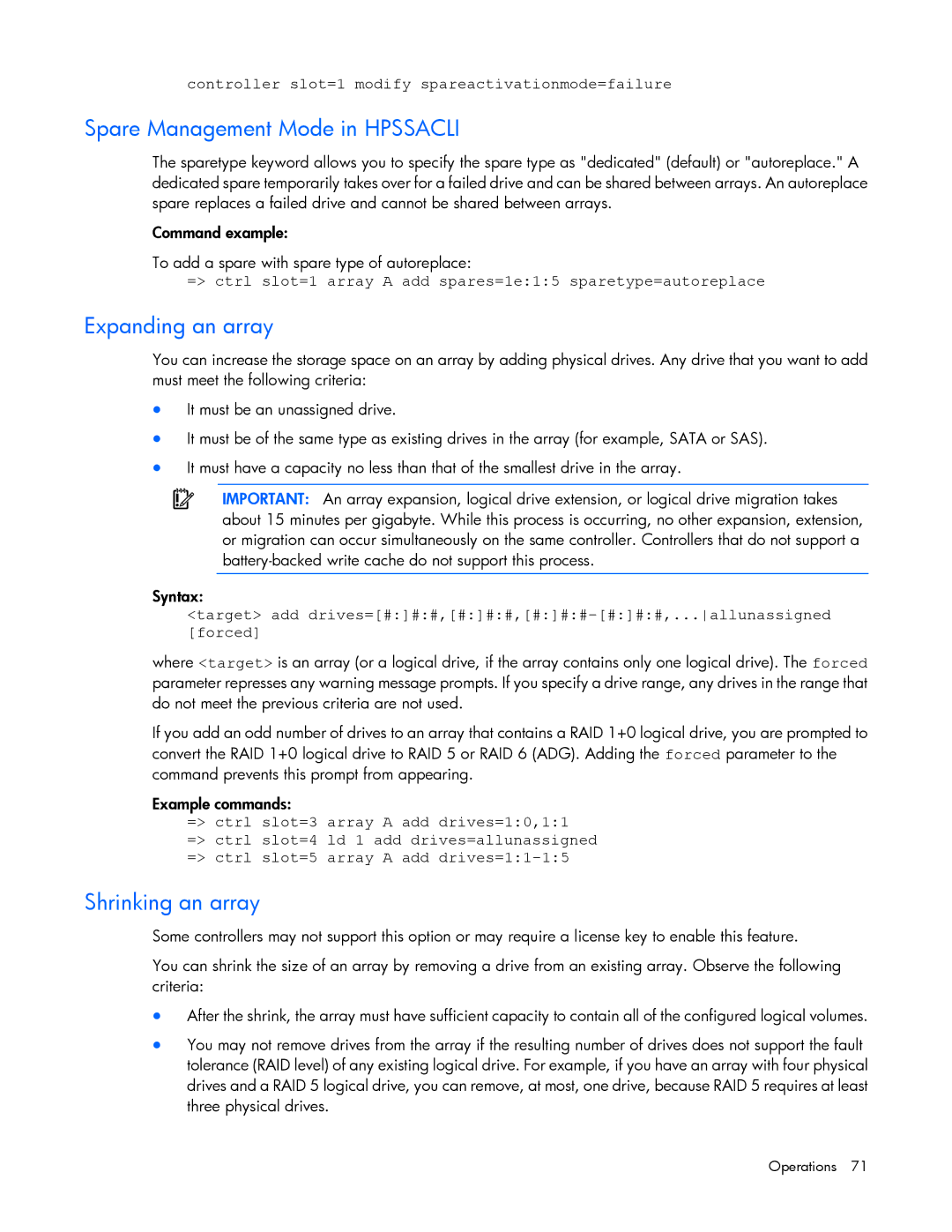
controller slot=1 modify spareactivationmode=failure
Spare Management Mode in HPSSACLI
The sparetype keyword allows you to specify the spare type as "dedicated" (default) or "autoreplace." A dedicated spare temporarily takes over for a failed drive and can be shared between arrays. An autoreplace spare replaces a failed drive and cannot be shared between arrays.
Command example:
To add a spare with spare type of autoreplace:
=> ctrl slot=1 array A add spares=1e:1:5 sparetype=autoreplace
Expanding an array
You can increase the storage space on an array by adding physical drives. Any drive that you want to add must meet the following criteria:
•It must be an unassigned drive.
•It must be of the same type as existing drives in the array (for example, SATA or SAS).
•It must have a capacity no less than that of the smallest drive in the array.
IMPORTANT: An array expansion, logical drive extension, or logical drive migration takes about 15 minutes per gigabyte. While this process is occurring, no other expansion, extension, or migration can occur simultaneously on the same controller. Controllers that do not support a
Syntax:
<target> add drives=[#:]#:#,[#:]#:#,[#:]#:#–[#:]#:#,...allunassigned [forced]
where <target> is an array (or a logical drive, if the array contains only one logical drive). The forced parameter represses any warning message prompts. If you specify a drive range, any drives in the range that do not meet the previous criteria are not used.
If you add an odd number of drives to an array that contains a RAID 1+0 logical drive, you are prompted to convert the RAID 1+0 logical drive to RAID 5 or RAID 6 (ADG). Adding the forced parameter to the command prevents this prompt from appearing.
Example commands:
=> ctrl slot=3 array A add drives=1:0,1:1
=> ctrl slot=4 ld 1 add drives=allunassigned => ctrl slot=5 array A add
Shrinking an array
Some controllers may not support this option or may require a license key to enable this feature.
You can shrink the size of an array by removing a drive from an existing array. Observe the following criteria:
•After the shrink, the array must have sufficient capacity to contain all of the configured logical volumes.
•You may not remove drives from the array if the resulting number of drives does not support the fault tolerance (RAID level) of any existing logical drive. For example, if you have an array with four physical drives and a RAID 5 logical drive, you can remove, at most, one drive, because RAID 5 requires at least three physical drives.
